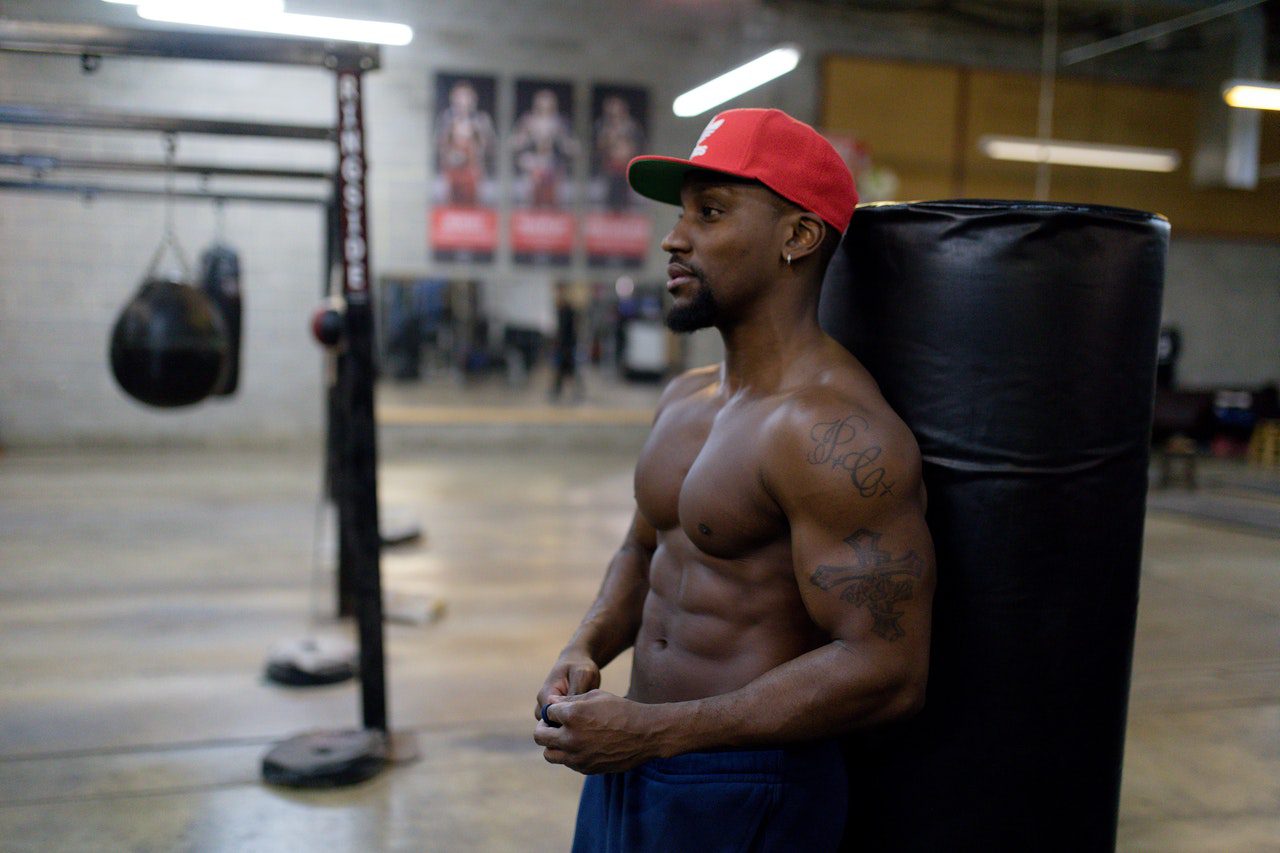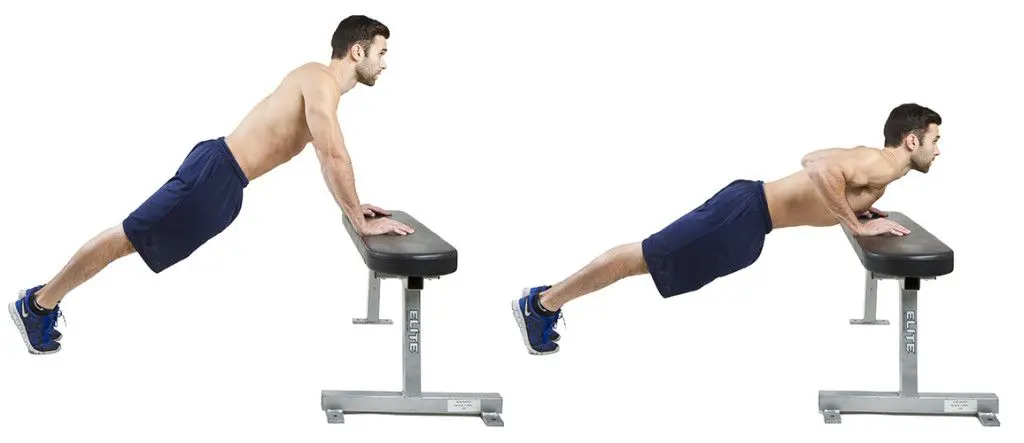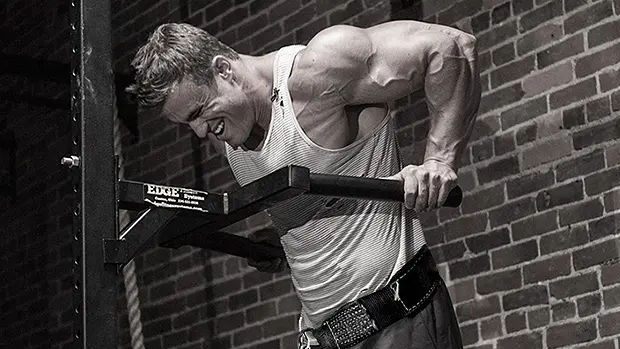
The best online fitness resource you'll ever need. We filter out the BS to ensure you meet your health and fitness goals!

The best online fitness resource you'll ever need. We filter out the BS to ensure you meet your health and fitness goals!

Your chest is largely made up of your pectoral muscles (pecs). Though you also need to develop your upper back (for width), triceps, and anterior deltoids (delts) to get the sculpted chest so sought after by bodybuilders all over the world, building up your pecs should be a priority. They define and shape the chest’s overall aesthetic and add much desired mass to your upper torso.
Functionally, your pecs control and take part in several motions. The flex and rotate the arms, causing adduction (bringing your arms in to the body’s midline.) They help you to push with your arms, play a crucial role in manipulating any front-loaded weight, and act as antagonists for the upper back.
So, they are important to develop both functionally and aesthetically. But how do you go about doing so? Well, put simply, you press: bench press, push ups, dips… anything in which you push something away from your body in the frontal plane (including the ground!) before bringing it back down under control.
There is a little more to consider if you’re looking for a fully rounded chest workout, however. Your pecs are made up of two groups of muscles: the pectoralis major, which spans from the shoulder to the mid chest in a fan-like structure, and your pectoralis minor, which sits just on the outer edge of your chest, behind the pectoralis major. They also spread quite a long way, running all the way from the clavicle region down to the bottom of the breastbone. Working a full range of muscle fibres therefore requires working your chest from several different angles on a regular basis.
The upper portion of your pecs are generally quite easy to develop, even for those who don’t know too much about anatomy or best practice in training. As pushes that involved your upper chest typically take in the anterior delts and are mechanically quite comfortable and well-supported, people gravitate towards them. Here, we are talking anything from a flat bench to the highest-angled of incline benches.
These are powerhouse moves: you can engage a lot of muscle, press a lot of weight, relatively comfortably. They make building the upper chest easy and enjoyable.
However, to develop a well-rounded chest, including adding thickness to your lower pecs, there are a few rules and a few exercises you should consider adding into your upper-body or chest days.

The first rule is variety. Don’t simply stroll into your gym, work the bench for a few sets, hit a few isolation exercises, and call time- at least, not every session. You need to work in several pec exercises per workout, making sure that compound movements feature prominently, and that a wide range of motion (including getting into the lower pecs) is included. Incorporate new movements and varied angles, make use of the equipment your gym has to offer, and hit different rep ranges throughout.
The second rule is consistency. Work all aspects of your chest on a regular basis. In addition, the same rules apply to the lower chest as the upper chest. You need to honour progressive overload in your lower chest exercises, so that you are always adapting. You need to work to failure from time to time and push hard enough the rest of the time so that the last couple of reps in each set are a struggle. Use all the tricks you use for your upper chest for your lower chest: bring in negative reps, drop sets, rest-pause sets, super- and giant- sets.
Thirdly, try prioritising your lower chest in the same way you would your upper chest. If it has fallen behind, bring it up by making it the focus of your training for a couple of months. Going back to the person who strolls in and hits the bench… fine. We all do it. But instead of hitting the flat bench, start off with the decline bench. If your gym hasn’t got a decline bench, try stack a plate or two under the leg end of a regular bench (or try moving gyms…) You will be at your strongest between the end of your warm-up and the end set of your first exercise. Working your lower chest as this first exercise will make the most of this, allowing you to put a lot of heft into it.
Fourth, work multiple lower chest exercises in the same vein. It’s common to follow up the flat bench with push ups, dips and any other number of exercises that work the upper chest again. Do this with the lower chest. Remember, time under tension is vital to hypertrophy- maximising good quality sets for your lower chest will maximise progression. Try going for a second exercise that works the same muscles in a different way, from a different angle, or in a different rep range. Decline push ups for sets of 16, cable crossovers working downwards, or dips on the parallel bar for a bodyweight blast.
Finally, at number five, isolate where you need to. Though the majority of your effort should go into working compounds (multi-joint exercises), there needs to be room in your schedule for isolation work (single-joint exercises). Use a higher rep range, stick it all at the end of your session, and work to fatigue, really feeling a pump and getting the lactic acid flowing. You could use this to further the work you’ve done in your compound movements. Alternatively, work your upper chest using compounds, then make up the difference by hitting the lower chest in your isolation work. Remember rule number one: variety is king.
Essentially, everything that goes into growing your upper chest needs to go into your lower chest.
We’ve mentioned variety. But where does this variety come from? We’ve mentioned compounds, but what are they? Luckily, we have a list of five top-quality lower chest exercises right here for you.

Push ups should always feature prominently in any chest building program. They are great finishers for more advanced athletes, fit very well into HIIT and giant set formats, and form a solid core of strength training for beginners.
Perform your push ups at an incline to bring your lower chest into the equation.
To perform incline push ups:
Chest presses like the push up are key to success in building a strong upper body and developing the pecs. Dumbbell presses are up there with the best of them. They are a great accessory movement, or main exercise in their own right, and can be easily adjusted to accommodate a range of resistance and experience levels.
The decline dumbbell press works the lower chest in the same way as the incline push up. To perform the dumbbell chest press, simply:

Cable machines are perfect for really zeroing in on trouble areas, for finding a great deal of tension, and for workout hypertrophy with assistance movements. Use crossovers as assistance finishers at the end of your workout, after all of your heavy compounds are done, and aim for high reps (10+, generally speaking).
To perform low cable crossovers:
These work in a similar way to the crossovers, though the final movement is more akin to the dumbbell chest press. Cable presses use the cables’ resistance to make up the weight for a chest press, and are great, low-impact, compound movements that work your chest, triceps and anterior delts synergistically.
They should typically be used in the same way as crossovers, with weight low, reps high, at the end of a workout in which you’ve performed some free- or body- weight compounds. However, they can also be used as a main upper body movement during a de-load week or session.
To perform cable low presses:

Dips are perhaps the king of all chest movements- beating the bench press in many trainers’ estimation. If you struggle to perform a dip rep, try using resistance bands or a dip machine to aid you. If you can comfortably perform 2-5 reps, treat dips as a strength move in your programs. If you can perform more, treat them as a main hypertrophy exercise or an assistance strength exercise, or perform weighted dips to lower reps.
Dips can easily be adjusted to bring the lower chest more into play.
To perform dips with emphasis into the lower chest, simply:
These five exercises- and variations of them, if you want to keep things fresh as mentioned above- should be everything you need to begin building up your lower chest. Add them in as appropriate, either as assistance work towards the end of a chest/upper body day or, in some cases, as the main movement of the day. It will be just a slight change in angle that changes them up from regular to lower chest exercises, but that change, and the trauma that comes with it, will round out your pecs nicely so that your chest will be fully developed.
Technique and form are always important, in any exercise you do. However, as it’s a subtlety in angle that will spell success or failure in your lower chest, you really do need to work mindfully. Squeeze your lower pecs at the apex of each rep, so that you feel the muscle fibres you’re working, work slowly, and begin light whilst you get the hang of everything.